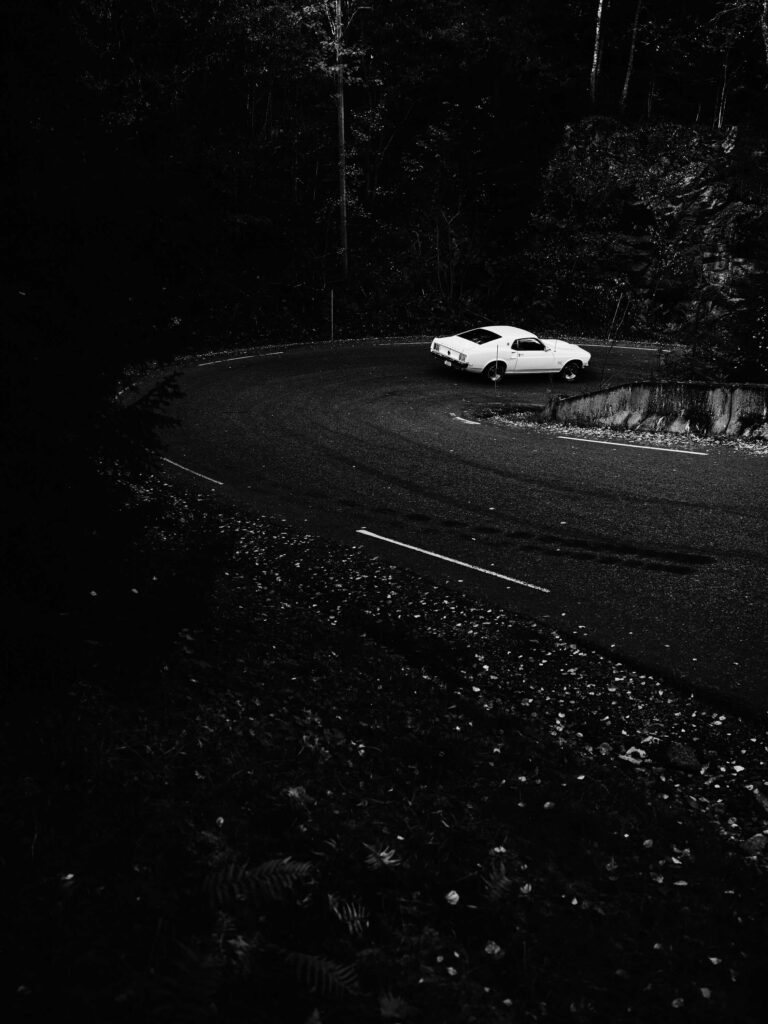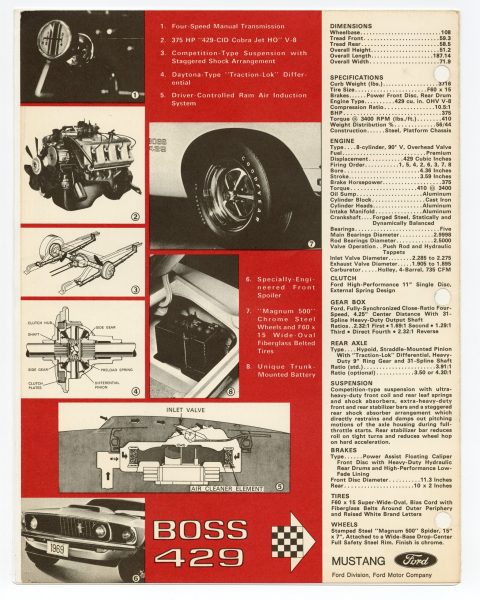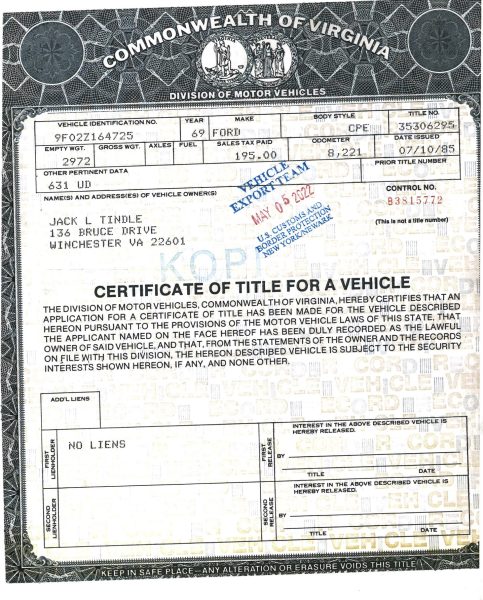Ford Mustang Boss 429
The Big(gest) Boss

Ford GT40: Victory over Ferrari and Kar-Kraft's Role
For Ford, the victory over Ferrari at Le Mans with the GT40 had immense value. Not least because the negotiations to buy Ferrari fell through when Enzo Ferrari realized that he would not be able to run his own "Scuderia" as he wanted if Ford gained majority control of the Italian brand.
Central to the victory over Ferrari at Le Mans was Kar-Kraft, a small company that was more or less Ford's motorsports division. Even though Ford and Kar-Kraft were officially two independent entities, which technically had nothing to do with each other, Kar-Kraft had quite broad authority within Ford, with offices in Engineering Building III in Dearborn and several other key Ford buildings. Wherever speed was involved, Kar-Kraft was always in the background, and the Ford GT40 was fast. Very fast…

Japanese Competition and American Motorsport Investment
Towards the end of the 1960s, the indicators began to point downward in the car capital of Detroit. Gray clouds started to gather on the horizon. Mainly, these "clouds" came from Japan, and throughout the 1970s, Japanese cars became a strong—and sometimes too strong—competitor against the established brands. Even The Big Three felt the competition from the small island on the other side of the globe.
Manufacturers knew that what happened at Sunday’s car races had a significant impact on how busy the salespeople would be on Monday.
That was one of the reasons American car manufacturers invested heavily in motorsports in an increasingly competitive market. Enormous sums were spent on developing cars and engines. This era was the golden age for American muscle cars, with GM, Chrysler, and Ford all making massive investments in cars designed to go extremely fast in a straight line and on oval tracks. Although Ford had already tasted European success, winning NASCAR was perhaps the most important goal. It was precisely this focus on stock-car racing that led to the creation of the Ford Mustang Boss 429.
And here, Kar-Kraft played a crucial role. Not only were they central to the development of the Mustang Boss 429, but they also produced it.
Historisk dokument
It is early morning in a small but exclusive office in Oslo. A yellowed document in a plastic folder is slid across the table. I can literally feel the hairs on the back of my neck stand up. Besides a series of serial numbers, the document mentions NASCAR in two places under the car's specifications.
What I am holding is the original document that accompanies the Wimbledon White Ford Mustang Boss 429 parked behind the wall of the meeting room where I now sit. This car was conceived in 1969 with a single purpose: to homologate the 429 engine for NASCAR. Only 859 such documents, and cars, were originally made that year. And now, I am holding one of the few that still exist. For a car enthusiast, this is comparable to an art lover being allowed to hang "The Scream" on their staircase.
The white Mustang, which in its early days was overshadowed by other muscle cars, now gleams under the light from the designer lamps hanging above its shiny paint. Beneath the elongated hood resides a 7-liter V8, often referred to as the Twisted-Hemi, but best known as the Boss 9—or Boss 429.
An oversized engine in a small body.
I look down at the car. The white paint, the engine with its distinctive cylinder heads, and I wonder how they managed to fit this enormous engine in place. The challenge was to fit an oversized engine into a car that was too small. In reality, the Mustang Boss 429 is a modified 428 Super Cobra Jet Mach 1 Mustang, where Kar-Kraft relocated the shock towers and modified the front inner fenders to accommodate the engine. But more challenges awaited. The heavy engine required the battery to be relocated to the trunk in an attempt to improve weight distribution. Stabilizer bars were also installed both front and rear to control the power. As a result, the Boss 429 became the first Mustang to have these as standard. And if you dream of air conditioning, it was not available for the Boss 429. There simply wasn’t enough space.
Discreet Power and NASCAR Heritage
The Ford Mustang Boss 429 was also exclusively delivered with a 4-speed manual transmission because Ford, or Kar-Kraft, simply couldn't find an automatic transmission they trusted to handle the power of the massive engine. The largest air intake Ford had ever equipped any Mustang with was also featured on the Boss 429.
And if you now think they continued with an opulent interior and a multitude of design elements to emphasize what this car was, you would be mistaken. The interior was like that of other Mustangs, except for an extra pedal and a gear shifter for the manual transmission. Externally, the period-correct louvered rear window was absent. Compared to other Mustangs, the Boss 429 was quite understated and far more anonymous than the smaller Boss 302 or a Mach 1.
It was, and still is, a sleeper. Only true enthusiasts would notice the air intake and the BOSS 429 lettering on the front fender. Beyond that, there's little that screams performance from the outside of the car. Even to the insurance companies, Ford was cautious. They reported the engine's output as 375 horsepower and 610 newton meters of torque. This way, the suit-clad gentlemen at American insurance companies could breathe a sigh of relief, and sky-high premiums were avoided.
But don't think that the Mustang Boss 429 isn't special, and don't think that there was any attempt to hide what this car was – there simply wasn't a need to emphasize its legitimacy or origin. Today, this understatement only enhances its legend.
And the details are there if you know where to look. By the door, you can find a plaque with a special NASCAR number. Here, you'll also find Kar-Kraft's production number. The first car had the number KK #1201, while the car I have in front of me has the number KK#14XX...This means that this car is from the very first series, the so-called S-series. These cars differ somewhat from the rest of the Boss 429s, as they feature magnesium valve covers and engine parts that were even more closely identical to those used in NASCAR.



